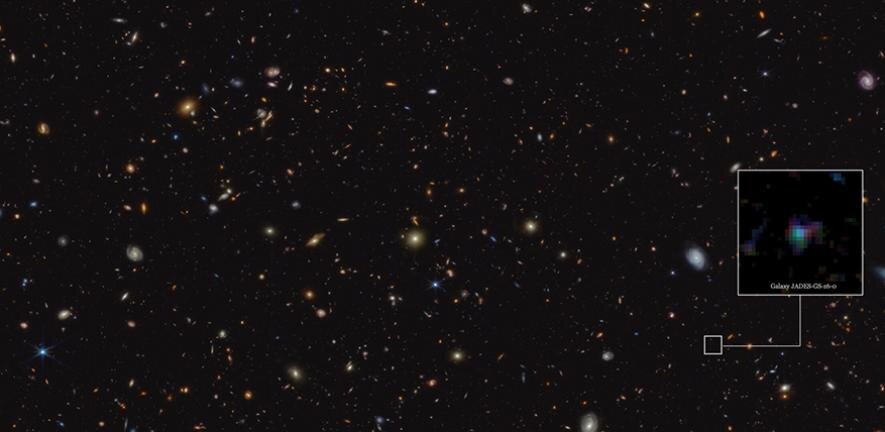For the first time, the James Webb Space Telescope has observed the chemical signature of carbon-rich dust grains in the early universe.
Similar observational signatures have been observed in the much more recent universe, and have been attributed to complex, carbon-based molecules known as polycyclic aromatic hydrocarbons (PAHs). It is not thought likely, however, that PAHs would have developed within the first billion years of cosmic time.
The international team, including researchers from the University of Cambridge, say that Webb may have observed a different species of carbon-based molecule: possibly minuscule graphite- or diamond-like grains produced by the earliest stars or supernovas. Their results, which suggest that infant galaxies in the early universe developed much faster than anticipated, are reported in the journal Nature.
The seemingly empty spaces in our universe are in reality often not empty at all, but are filled by clouds of gas and cosmic dust. This dust consists of grains of various sizes and compositions that are formed and ejected into space in a variety of ways, including by supernova events.
This material is crucial to the evolution of the universe, as dust clouds ultimately form the birthplaces for new stars and planets. However, the dust absorbs stellar light at certain wavelengths, making some regions of space challenging to observe.
2023-07-19 13:48:02
Link from phys.org
